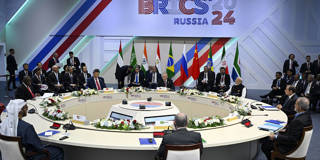Although middle powers like India, Indonesia, Brazil, South Africa, Turkey, and Nigeria are unlikely to form a bloc of their own, they are well-positioned to lead on many pressing issues. In doing so, they can offer a vision for the world economy that does not depend on either America’s or China’s power and goodwill.
CAMBRIDGE – China’s rise has challenged America’s undisputed hegemony over the world economy – a status the United States has enjoyed since the Soviet Union’s collapse. While some American national-security elites seek continued US primacy, others seem resigned to an increasingly bipolar world. A more likely outcome, however, is a multipolar world where middle powers exert considerable countervailing force, thus preventing the US and China from imposing their interests on others.

CAMBRIDGE – China’s rise has challenged America’s undisputed hegemony over the world economy – a status the United States has enjoyed since the Soviet Union’s collapse. While some American national-security elites seek continued US primacy, others seem resigned to an increasingly bipolar world. A more likely outcome, however, is a multipolar world where middle powers exert considerable countervailing force, thus preventing the US and China from imposing their interests on others.